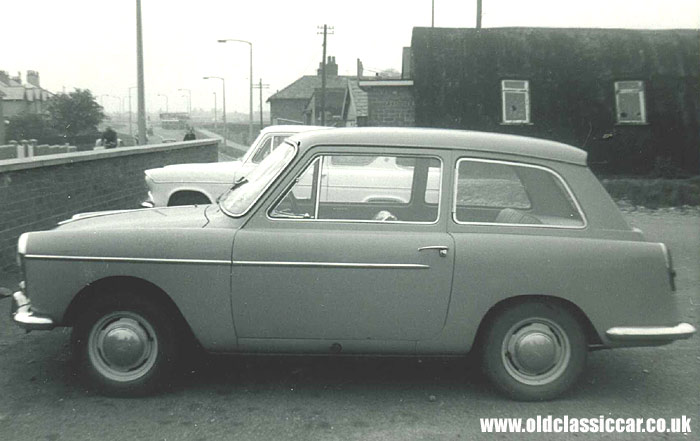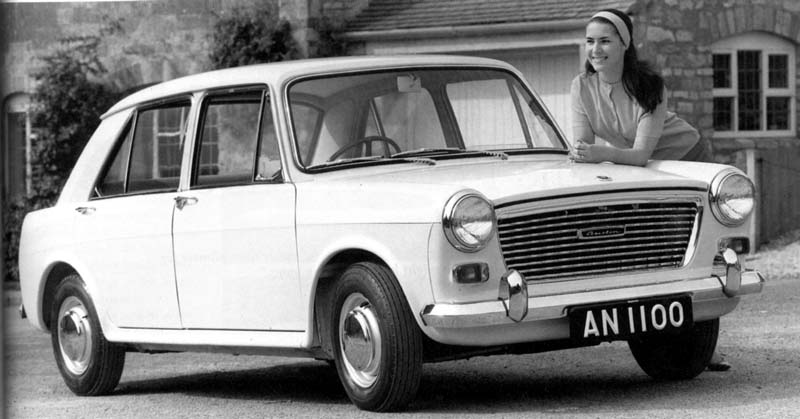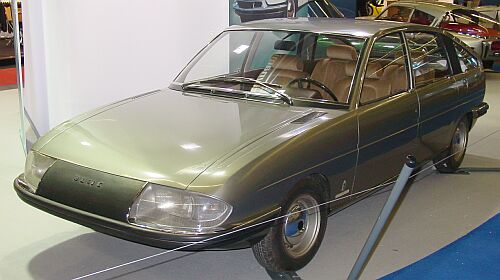For those of us who liked British made cars these two come under the 'If only' and 'what the hell were they thinking ?' categories.
In the 1960s Pininfarina did quite a bit of work for BMC. Legend has it that during a visit by HRH The Duke of Edinburgh to BMC headquarters at Longbridge, Birmingham in the late 1950s HRH was annoyed by Leonard Lord (BMC chairman) going on about the royal family using Land Rovers instead of the Austin Champ 4x4 made by his company. So HRH was less than complimentary about designs for new cars which scared Lord into action. So he commissioned Pininfarina to redesign quite a few BMC models, ironically this sidelined his own (Italian) designer 'Dick' Burzi.
This relationship affected quite a few production cars - First up (not aero) was the A35 - before

After (as the A40 although it was exactly the same underneath)

The A40 Countryman (aka estate or station wagon model) was credited with being the first supermini with a hatchback. However several BMC engineers didn't like the designs. My namesake (<--i.e. Him in the photo - Alec Issigonis) didn't like styling at all, so he didn't use them unless he had to.
Later Pininfarina presented a couple of alternative designs to BMC. Firstly the 1100 - best seller in the UK. This is BMC's version originally designed by Issigonis but with final input from Pininfarina to make it less 'stark'.

Underpinnings were the same as the Mini except for a larger 1098cc (and later 1275cc) engine - gearbox in the sump of the engine.
Pininfarina version

Of course a few people took notice of these designs even if BMC (by then spiralling into bankruptcy and becoming BL) ignored them. For example the superb Citroen GS and GSA (GSA is GS with a hatchback rear end).

Citroen kind of envisaged a car with a Wankel style rotary motor but instead the GS got a flat four, air coolled unit - think 2x 2CV engines joined together.
Next up the 1800 - same engine as the MGB. BMC's rather stark and ugly version.

which needed a lot of fixing in production. It also had the gearbox in the sump and also had a transverse inline 6-cyl engine though which is an achievement - not a useful one mind - and it sold like ice cream at the beach in Iceland compared the (conventional, cheaper and more reliable) alternatives from Ford and Vauxhall. And then Pininfarina's version

And for comparison to show that others paid attention - the Citroen CX

Looks similar, no ? Of course Robert Opron designed the CX. Hmmm. Still want a 'CX25 DTR Turbo 2 Safari' though (this is the genuine badge on the back of the estate Diesel in 1992

)
After BMC failed, merged, was nationalised and so on, it also made the Princess

which is kind of similar to the Farina 1100 apart from the front lights and hatchback (which didn't come until 1980). The Princess was made bad by using the same engine and gearbox in sump as the 1800. Then of course came the Rover SD1 (aka Rover 3500) which had a hatch from new.

which was also sold in the US but suffered the same 'sealed beams are good' madness that the XM featured by PW above (as well as the Jaguar XJS, Citroen CX and any FIAT models) did.

I include the SD1 mainly as at the time of it's launch BL made a feature of it's shape claiming it would save fuel. Mind you the twin carb-fed 3528cc OHV V8 (actually a developed version of the 1950s Mercury lightweight alloy V8 bought by Rover in the 1960s) linked to a 3-speed auto kind of offset any advantage that aero may have given it.
My only memory of an SD1 is the V8-S (think V8 but even more thirsty but much faster) which was owned by the uncle of my friend. I sat in the front and savoured the V8 roar and neck-snapping starts...
...until the can of coke on the front shelf fell into my lap. Which was nice, especially as this was on my way to school. I was comfortable for the day sitting in a lot of sugar water.
Interestingly Rover thought the V8 was thirsty so they went for the
Iceberg project which would turn the V8 into a Diesel engine. Not that this was ambitious of course - turning a light-alloy V8 into a long stroke Diesel engine...